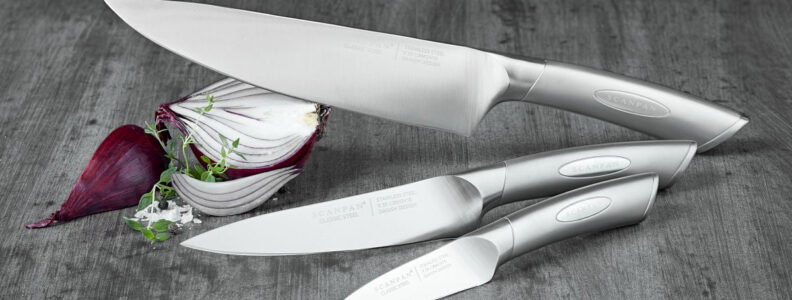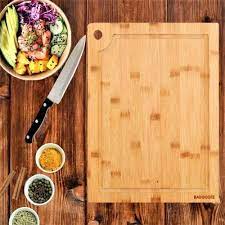In the heart of every bustling kitchen, there’s a dynamic duo that forms the backbone of culinary creativity and precision – the wood cutting board and the chef knife. Together, they create a symphony of flavors and textures, transforming ingredients into culinary masterpieces. In this blog, we’ll explore the intrinsic connection between wood cutting boards and chef knives, shedding light on why this pairing is a cornerstone for both amateur cooks and seasoned chefs alike.
Knife-Friendly Surface
Wood cutting boards have long been favored in professional kitchens for their knife-friendly nature. Unlike harder surfaces like glass or plastic, wood provides a forgiving surface that helps preserve the sharpness of your chef knife’s blade. This means less wear and tear on your knives, resulting in a longer lifespan and sustained cutting precision.
Gentle on Ingredients
The natural softness of wood ensures that your ingredients are treated with care. The surface of a wood cutting board has a bit of give, preventing excessive force on your chef knife during chopping and slicing. This not only protects the knife but also maintains the integrity of delicate herbs, vegetables, and proteins, allowing for precise and controlled cuts.
Hygienic Properties
Contrary to common belief, wood cutting boards possess natural antibacterial properties. Studies have shown that wooden surfaces have the ability to inhibit the growth of bacteria, making them a hygienic choice for food preparation. Additionally, wood absorbs moisture from foods, further preventing the development of harmful microorganisms. Regular cleaning and maintenance are essential, ensuring a safe and sanitary kitchen environment.
Enhancing Flavor Profiles
Wood cutting boards have the added benefit of imparting subtle flavors to ingredients. This can be particularly advantageous when working with meats or cheeses, as the wood subtly enhances the taste of the food. Choosing a high-quality, well-seasoned wood cutting board can contribute to the overall flavor profile of your culinary creations.
Investing in Quality Chef Knives
To truly harness the potential of a wood cutting board, it’s essential to pair it with a quality chef knife. A well-balanced, sharp chef knife is a kitchen essential, enabling precise cuts and making the cooking process more enjoyable. When shopping for chef knives in Adelaide, consider factors such as blade material, handle comfort, and overall craftsmanship to ensure you invest in a tool that complements your culinary skills.
Conclusion
In the world of culinary arts, the collaboration between wood cutting boards and chef knives is a time-honored tradition. This perfect pair not only enhances the cooking experience but also contributes to the longevity and performance of your kitchen tools. As you embark on your culinary journey, consider the harmony between a high-quality wood cutting board and a sharp chef knife – a combination that will undoubtedly elevate your kitchen endeavors to new heights.

